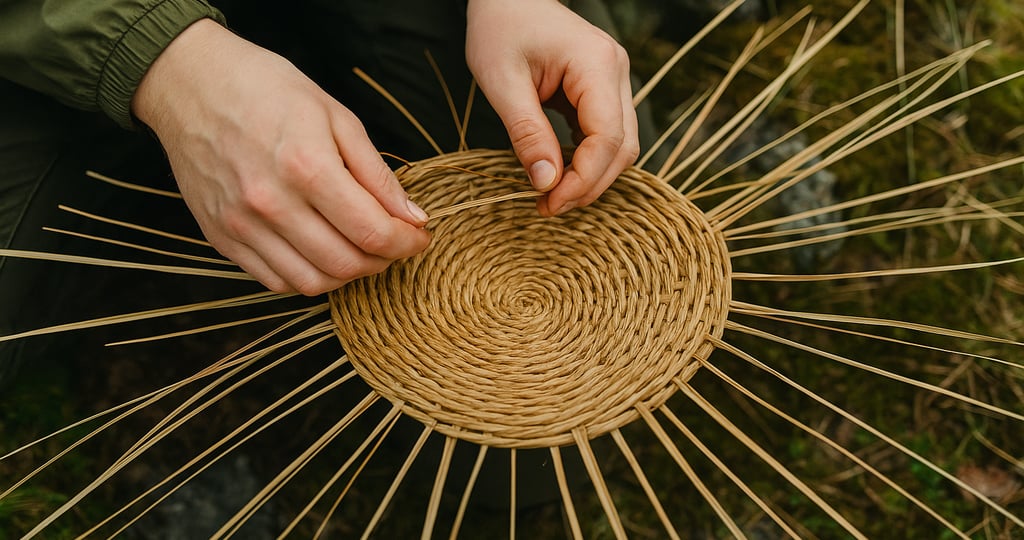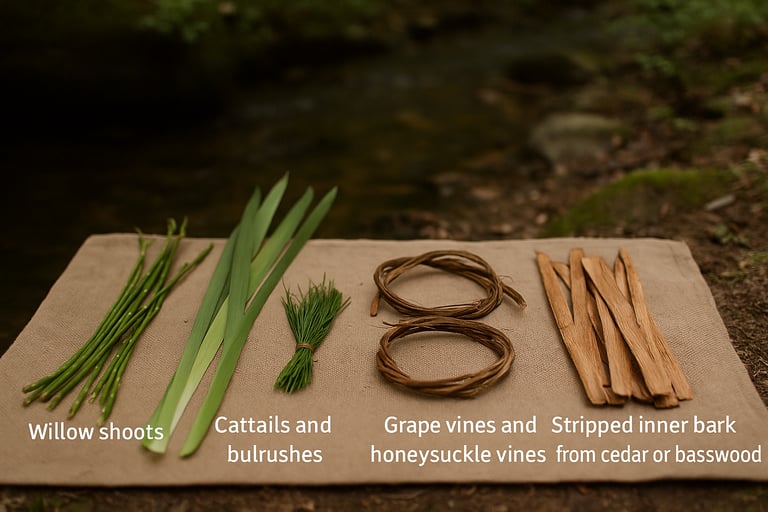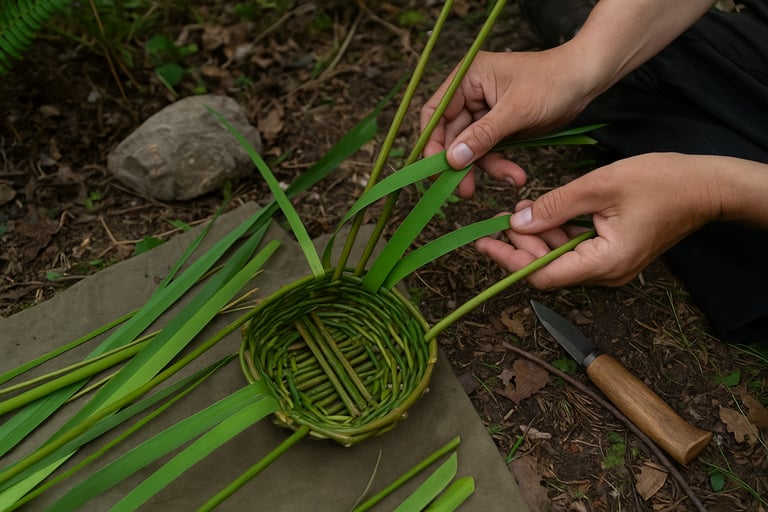Basket Weaving in the Wild: A Primitive Survival Skill That Still Matters
Learn how to weave baskets in the wild using natural materials like willow, cattails, and vines. This primitive survival skill is easy to learn and incredibly useful for carrying, storing, and foraging in the wilderness.


Basket Weaving in the Wild: A Primitive Survival Skill That Still Matters
Basket weaving might seem like an old-fashioned or even decorative pastime, but in a survival situation, it's an incredibly practical and often underestimated skill. Being able to weave strong, functional containers from natural materials gives you the ability to carry, gather, store, and even cook food without relying on modern gear.
This guide will walk you through how to identify wild weaving materials, how to prepare them, and how to start weaving your own primitive baskets right in the wilderness.
Why Basket Weaving Is a Valuable Wilderness Survival Skill
In the wild, the ability to carry and store things safely is essential. You'll need to collect firewood, forage for food, transport water, hold fish or small game, and even store gear. Making baskets from scratch allows you to create lightweight, durable containers from the land itself.
Beyond that, basket weaving teaches you to slow down, observe patterns in nature, and develop patience — all critical survival traits. And in a longer-term off-grid living scenario, it opens the door to crafting larger items like fish traps, sleeping mats, and pack frames. Many of these projects start by carving simple wooden frames or supports with a bushcraft knife.
Best Natural Materials for Weaving Baskets in the Wild
The success of your basket depends heavily on the materials you choose. Look for plants that are flexible, fibrous, and strong when bent. Here are some of the most common and effective wild weaving materials:
Willow shoots are a go-to choice. They’re flexible, abundant near water, and perfect for tight weaves.
Cattails and bulrushes grow in wetlands and can be flattened or twisted into strips.
Pine needles work well for coiled baskets and are surprisingly strong when bundled.
Grape vines and honeysuckle vines offer a sturdy base for structural weaves.
Stripped inner bark from cedar or basswood can be cut into long strips once soaked (These same fibers are also excellent for making rope or lashings (cordage) in bushcraft setups).
All of these materials should be soaked or steamed before weaving to prevent cracking and make them more pliable. The greener the material, the easier it is to shape.
How to Prepare Wild Materials for Basket Weaving
Once you’ve gathered your materials, you need to prep them properly before weaving. With shoots and vines, remove any leaves, tendrils, or bark that may rot or get in the way. If the material is too stiff, soak it in water for a few hours or hold it over steam to soften.
If you’re using flat materials like cattail leaves or bark strips, you can press them under a rock or smooth surface to help flatten them, which makes for tighter, cleaner weaves. Keep materials damp while working — dry fibers become brittle and hard to bend.
The more consistent your strips or lengths are in width and thickness, the more even your final basket will be. But don't stress if it’s not perfect, function comes before form.
Simple Basket Weaving Technique for Beginners
The easiest method for beginners is the over-under weave using a basic round or square base. Start by laying out your warp pieces (the stationary spokes of the basket) in a crisscross pattern. Hold them in place with a rock or tie them together temporarily.
Then take a long, flexible weaver material and start weaving in and out of the spokes in a circular pattern. Alternate the weave on each row so it holds tight — over one spoke, under the next, and repeat. As you go, push the rows downward and keep the tension firm. When one strip runs out, overlap the next to keep it going smoothly.
You can make the sides of the basket rise by slowly angling the weave upward. Finish the rim by folding the ends inward or tucking them between layers.
Practical Uses for Baskets in Bushcraft and Survival
Handmade baskets have more uses in the wild than you might think. A tight weave can hold foraged berries, mushrooms, or herbs. A loose weave is great for firewood or kindling. Deep baskets can carry fish or transport meat. Coiled baskets can even be lined with clay for use as cookpots. To improve sealing, natural adhesives like tree resin or hide glue can also help reinforce joints or gaps.
You can hang baskets from branches to keep food off the ground or place them in streams to rinse or chill perishables. With practice, you can weave larger, sturdier frames for gear hauling or even fish traps and wall panels.
In a long-term survival or homesteading situation, basket weaving becomes one of those quiet, high-impact skills that saves time, increases efficiency, and reduces dependence on modern tools.
Learn to Weave, and You’ll Never Be Without a Container Again
Weaving baskets in the wild takes patience, but it's deeply satisfying and surprisingly accessible once you try it. All it takes is a knife, some good materials, and a bit of trial and error.
Over time, you’ll start to see potential cordage and weaving material all around you and with that, the power to build what you need from the land itself.




© 2025. All rights reserved About | Privacy Policy | Terms and Conditions | Affiliate Disclosure | Disclaimer


